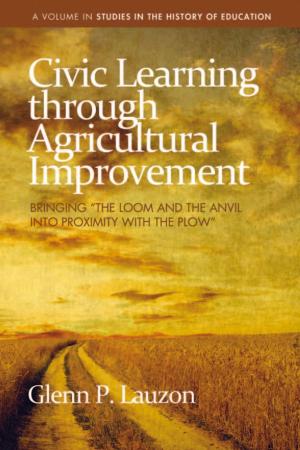The Talking Point
Creating an Environment for Exploring Complex Meaning
Business & Finance, Management & Leadership, Decision Making & Problem Solving, Management, Human Resources & Personnel Management| Author: | Thomas R. Flanagan, Alexander N. Christakis | ISBN: | 9781607523635 |
| Publisher: | Information Age Publishing | Publication: | January 1, 2010 |
| Imprint: | Information Age Publishing | Language: | English |
| Author: | Thomas R. Flanagan, Alexander N. Christakis |
| ISBN: | 9781607523635 |
| Publisher: | Information Age Publishing |
| Publication: | January 1, 2010 |
| Imprint: | Information Age Publishing |
| Language: | English |
(A Collaborative Project of the Institute for 21st Century Agoras) The Talking Point is all about how people learn within groups. People can be much smarter than crowds if you measure “smart” as decisionmaking speed. Crowds can be much wiser than individuals if you measure wisdom by depth of understanding. It is possible to understand a great deal of information yet (or maybe because of this) you can also be slow to make decisions. If rushed, crowds will make poor decisions in spite of their wisdom. So... to get good group decisions on a time scale that will keep pace with policy development needs and social necessities, groups have to be supported so that their decisionmaking process can be accelerated. Much has been said and written about this problem over the years. It is dangerous to have the power of groups without the wisdom of groups, and it is tragic to have the wisdom of groups without the power of groups. The Talking Point presents a meeting point for the wisdom and power of groups through the use of Structured Dialogic Design. With hopeful intentions, as a culture we have poisoned the well just when we need it most. We have touted design charettes and stakeholder processes as engagement vehicles and then ignored, marginalized or corrupted the very input that we swore to hold as sacred. This has created a myth that large scale collaboration is not possible, and the myth has led to considerable disillusionment among wouldbe participants and couldbe sponsors. Structured Dialogic Design seeks to bust the myth about our limited capabilities to sustain boundary spanning collaboration. To bust this myth, Structured Dialogic Design needs to usher in a new wave of collaborative planning. Scholars have identified the Structured Dialogic Design methodology as the cutting edge of “third phase” science where the reality of a situation embraces interactions between objective findings and subjective intentions. The Talking Point provides a window for observing how Structured Dialogic Design has been put into practice and paints a panorama of the issues that confront complex social system design. This book is itself a bridge between scholarship and practice, written to be accessible yet anchored to major themes in cognitive psychology, information systems, social systems, and models of group learning. The book is an invitation for transformational leaders and those who support transformational leaders to pick up a new tool in the essential quest to put our nation and our world back on track toward sustainable futures. The Talking Point is a fresh source of water in a world that is thirsty for new ways of solving complex problems.
(A Collaborative Project of the Institute for 21st Century Agoras) The Talking Point is all about how people learn within groups. People can be much smarter than crowds if you measure “smart” as decisionmaking speed. Crowds can be much wiser than individuals if you measure wisdom by depth of understanding. It is possible to understand a great deal of information yet (or maybe because of this) you can also be slow to make decisions. If rushed, crowds will make poor decisions in spite of their wisdom. So... to get good group decisions on a time scale that will keep pace with policy development needs and social necessities, groups have to be supported so that their decisionmaking process can be accelerated. Much has been said and written about this problem over the years. It is dangerous to have the power of groups without the wisdom of groups, and it is tragic to have the wisdom of groups without the power of groups. The Talking Point presents a meeting point for the wisdom and power of groups through the use of Structured Dialogic Design. With hopeful intentions, as a culture we have poisoned the well just when we need it most. We have touted design charettes and stakeholder processes as engagement vehicles and then ignored, marginalized or corrupted the very input that we swore to hold as sacred. This has created a myth that large scale collaboration is not possible, and the myth has led to considerable disillusionment among wouldbe participants and couldbe sponsors. Structured Dialogic Design seeks to bust the myth about our limited capabilities to sustain boundary spanning collaboration. To bust this myth, Structured Dialogic Design needs to usher in a new wave of collaborative planning. Scholars have identified the Structured Dialogic Design methodology as the cutting edge of “third phase” science where the reality of a situation embraces interactions between objective findings and subjective intentions. The Talking Point provides a window for observing how Structured Dialogic Design has been put into practice and paints a panorama of the issues that confront complex social system design. This book is itself a bridge between scholarship and practice, written to be accessible yet anchored to major themes in cognitive psychology, information systems, social systems, and models of group learning. The book is an invitation for transformational leaders and those who support transformational leaders to pick up a new tool in the essential quest to put our nation and our world back on track toward sustainable futures. The Talking Point is a fresh source of water in a world that is thirsty for new ways of solving complex problems.















